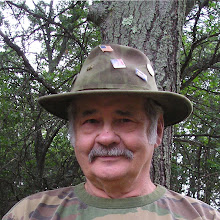Soil is the final thing that I am going to discuss in this chapter on Mother Earth. Soil is present in some form in just about every location that is not covered by water. It is also present under the water, just not visible or available for use by mankind. While many consider soil as non-renewable, I disagree. Soil is always being formed by nature. Wind and water working over rocks are always breaking away little bits of it. Anything organic that dies, eventually decays and becomes humus. This mixed with the minuscule pieces of stone become soil. Granted, this takes quite a bit of time, but not nearly as long as non-
renewables such as coal or oil. For those of you who may have doubts about this, make yourself some comp
ost. You can find a recipe for it tin the chapter on agriculture. Take that compost and add some sand or other inorganic material and you have produced soil. You can grow crops in the soil you just made. The problem with soil is it is always moving. Wind moves it, water moves it, glaciers move it and man moves it or causes it to be moved. How much of this is helped along by mankind and how much would happen anyway always presents an argument. The glaciers moved many millions of tons of soil without any help from mankind. Here in Wisconsin you can till where the glacier ended by looking at the type and the depth of the soil. Northern Wisconsin has a thinner layer of soil and more stones close to the surface. This is due to the fact that the glacier pushed the topsoil south. The southern portion of the state has deeper richer soil and few stones near the surface. Wind and water are helped by mankind when it comes to them moving soil. Drive by a plowed field or a construction site on a windy day and you will see soil being moved by the wind. Water also has an easier time moving soil a
t these locations, especially when rivers and streams are at flood stage. Where these types of locations are on a hillside, any amount of rainfall will speed up the movement of the soil. Without soil plants cannot grow. Without plants animals cannot live. Without plants and animals, humans cannot exist. The problems of soil need to be addressed and I will try to do a little bit of that in several upcoming chapters.
I hope that this rather simplistic chapter has been of some help in understanding the earth and some of its problems. I could have gone much deeper and included much scientific information, but that is not the purpose of this book. I am trying to bring environmental issues down to a common sense level. All of the scientific information that one could want can be obtained at the library or on the Internet. This information is written by real scientists, which I am not. Used correctly this information can be of great value to a true environmentalist. Misused, it becomes fodder for the knee-jerk pseudo-environmentalists. So be careful to get the real science when on line or at the library. Low let us move on to some more thought from an average citizen.
Until next time.
http://www.therealamericanpolitics.blogspot.com
http://www.sasl.blogspot.com

No comments:
Post a Comment